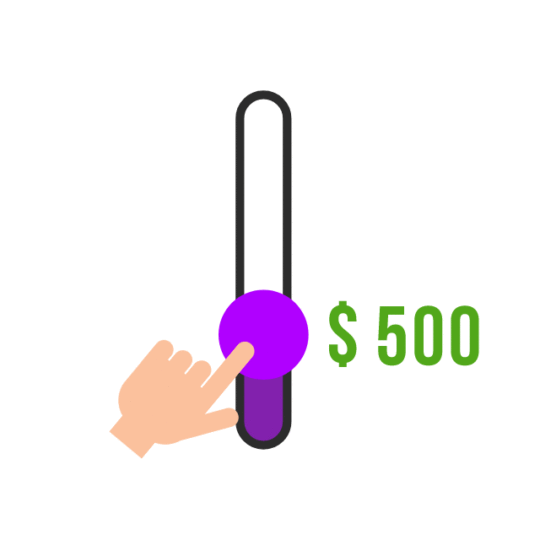Innovative Strategies For Competitive Markets
Customers demand that businesses give them something new in our constantly changing world.
The way to do that is with innovative strategies. However, this results in releasing more than 30,000 unique products each year
—and about 95 percent fail, according to Harvard Business School professor Clayton Christensen.
At the same time, many businesses need help coping with a fiercely competitive marketplace
or need to rely more on current customers. Some are reluctant to make changes because of potential risks.
The solution to many of these problems is incremental innovation –
– rather than radical or disruptive innovation– to improve their value proposition continuously and, subsequently, their overall results.
What is incremental innovation?
Incremental innovation is a series of company product or service improvements.
There are two basic types of innovation: incremental and radial.
Incremental innovations are when companies make small changes to existing products
through incremental improvements to the business model to improve customer retention and marketing.
These developments also help improve efficiency, productivity, and competitive differentiation.
Radical innovations transform the business model altogether. It transforms an existing system,
design, or invention into something new. These innovations can change parts of the system or the entire production process.
Radical innovators create an entirely new market for their products.
However, only some products or procedures are brand-new ideas. Most new product
s are alterations or new applications of existing products, with some twist in design, function, portability, or use.
For example, Apple didn’t invent the mobile phone but kept innovating it over the years.
Now it’s one of the world’s most profitable companies.
In a large study by McKinsey & Company, they were told by business leaders that many companies
were putting less emphasis on radical innovation and more focus on incremental innovation.
These companies focus on improving their significant products, exploiting known opportunities, conserving cash, and minimizing risk.
However, they concluded that more urgent actions are required in turbulent times. For example,
1. Adapting their core products and service to meet changing custom
2. Identify and quickly respond to opportunities created by these market changes
3. Restart their innovative programs and allocate resources as needed
4. Develop products and services to be ready for post-crisis recovery.
Examples of Innovation Strategies For Competitive Markets
Gillette had created and patented a unique razor handle and inexpensive replacement blades.
They upgraded the handles with innovations like pivoting heads. When the patented handle expired,
hey replaced the expensive handle with a cheaper one and sold “improved,” more expensive blades.
Coca-Cola has been innovating and staying relevant with line extensions for over 100 years.
For example, Cherry Coke, Coke with lime, and Diet Coke. They have remained relevant as trends change.
Apple iPhone was introduced in 2007 with few features. Here are a few examples.
From small metal flip phones to glass with touchable features, from 3G to 5G to small phones to large,
multipurpose phones with cameras to thousands of apps so you can even do your banking on the phone,
Focus On Your Entire Business Model
Often, incremental innovations focus on the company’s specific product or service. This focus is fine,
but I suggest starting with your business model and examining every area within that model
— plus your competitor’s business model. Look at every value proposition of your offering, brand, and more.
Another strategy is to set up a schedule for each iteration. When implemented, you will have a period of exclusivity.
Then hit your competitors with another significant improvement.
When you have gone through your entire business model, your competitors will find it difficult to copy your value-price offering.
Or look at improving just two or three areas and implement them.
Then come back and innovate another two or three areas several months later
and not only impress your customers but also drive your competitors crazy and make it hard for them to copy you.
Creativity
Entrepreneurs work with two types of thinking. Linear thinking—sometimes called vertical thinking
—involves a logical, step-by-step process. In contrast, creative thinking is more often lateral,
in which established logical thought patterns are purposefully ignored or challenged.
According to Wikipedia, lateral thinking indirectly solves problems using a creative
approach where the reasoning process is only sometimes obvious. It involves ideas that may take time to be noticeable.
Lateral thinking involves ideas that may only be obtainable with a step-by-step approach.
It solves problems using an indirect method. Rather than going from A directly to B,
you start from a different place, not on the A to B road.
You begin at location C, which is lateral (at an angle) to the A to B road.
This process causes your mind to think of new, different ways to reach your destination at B.
It is a powerful way to generate very creative ideas. You can learn more about lateral thinking
from Edward De Bonos’s book, “The Use of Lateral Thinking,” or our blog on lateral thinking.
Edward De Bono also links lateral thinking to humor, where your mind has to switch from
a familiar pattern to an unexpected one that generates surprises and new insights.
This innovative thinking process is a powerful creative tool worth your time learning.
The Benefits of Incremental Innovation
Instead of risking radical innovations, many companies are now pouring their development
budgets into incremental innovations. Also, many customers prefer upgraded products
over radical new products. This incremental strategy gives the company additional cash to work toward radical innovations.
An incremental innovation strategy enables you to retain your market share by staying relevant.
But you also have to understand what your clients want. For example,
Incremental innovations allow you to stay ahead of your competition while taking negligible risks
and using limited financial resources. Customer satisfaction with your offering creates customer retention.
Radical innovations are essential to an organization’s long-term strategy,
but short-term upgrades to existing products keep customers interested in your business.
If you keep the products you have now without keeping them up to date,
you could be in trouble as the economy and markets change in the future.
Conclusion
With our constantly changing economy and a competitive marketplace, the solution is
to develop an incremental innovation strategy. These small and often frequent changes help improve efficiency,
customer retention, and competitive differentiation. Apple is a perfect example of how to do it.
When looking for areas to improve, be positive in your approach. Don’t focus on problems.
Focus on the opportunities that will result from your efforts. Also, broaden your perspective and use both vertical and lateral thinking skills.
The benefits from this incremental innovation can be powerful and include:
Staying relevant to your market, Improving your growth with minimal risk, and retaining clients longer.
Protect yourself from a changing economy and marketplace. Innovative Strategies For Competitive Markets
Steps To Create Incremental Innovations?
Step One: Start by studying your current customers and competitors. Include their business models.
Step Two: Look at all the modules in your business model. Don’t ask, “What’s wrong?”
Ask, “How can I make this module (product, price, performance, Etc.) better?
When you are looking for ideas, keep your questions positive. Focusing on the positive will result in positive answers.
Step Three: Select a reachable, measurable objective and do the research needed to expand that objective.
Step Four: Get several ideas for each module. The more modules you examine,
the stronger your innovation will be. Select which idea you will implement
(this may be challenging because you may only be able to execute some of your ideas simultaneously.
Step Five: Make sure you have the time and resources, test it, then iterate and try again.
Cheers.
Jim Zitek
Also, check “How innovative strategies drive sales.” and “Want a creative solution to an unsolvable problem.”

Innovative Strategies That Create More Profits
ClickVisor Program
















